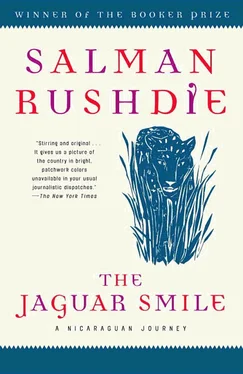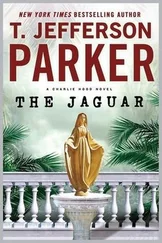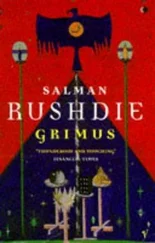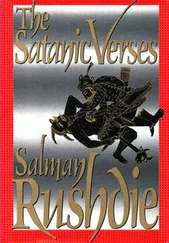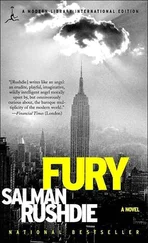Ah yes, la Cia . My reflex reaction to the Agency’s entry into the conversation was simultaneously Eastern and Western. The Western voice inside me, the voice that was fed up with cloaks and daggers and conspiracy theories, muttered, ‘not them again’. The Eastern voice, however, understood that the CIA really did exist, was powerful, and although it was easy to make it a scapegoat, it was also just a bit too jaded, too cynical, to discount its power.
The CIA operated in Central America through what it charmingly referred to as UCLAs: Unilaterally Controlled Latino Assets. Now that it was to be permitted to resume overt operations, those Assets would be going to work with a will. Conservative estimates of the CIA’s planned 1986–87 budget against Nicaragua suggested a figure somewhere in the near vicinity of $400 million — four times the aid allocated to the Contra forces. Add to that the $300 million being spent by the Reagan administration to try and ‘buy off’ Nicaragua’s neighbours, and you had a grand total of $800 million being spent on dirty tricks and destabilization, to bring to heel a country of under three million people.
(The total amount of money raised by the Band Aid, Sport Aid and Live Aid events, just to offer some sort of comparison, was less than a quarter of this figure.)
It was the CIA that had mined the harbour at Corinto, and in the face of overt operations like that, the Nicaraguan government would face real problems. Carrión said, ‘Against such aggression, there is simply not much we can do. We lack the resources.’
Carrión believed that when Reagan realized the Contra would never do the job for him, a direct US invasion on some pretext or other would follow. I was to discover that this was the more or less unanimous opinion of the Sandinista leaders I encountered. ‘Reagan has invested too much personal prestige in the Nicaragua issue to leave office without trying to smash us,’ Ramírez said. The government was preparing for the US invasion by arming the campesinos . ‘Our best defence,’ Luis Carrión told me, ‘is the people in arms.’ It was a phrase I heard many times during my stay. Many thousands of ordinary Nicaraguans had already been given AK-47 automatic rifles, as well as other hardware. If the the Pentagon could be convinced that the US body count would be high, it might make an attack politically unsaleable. ‘Nicaragua will not be like Grenada for them,’ Luis Carrión said. ‘It will not be quick.’
I had begun to see great mountains of corpses in my mind’s eye. I changed the subject, and asked Sergio Ramírez about a recent report by the ‘International League for Human Rights’, published in the Herald Tribune . ‘Repression in Nicaragua is not as conspicuous or as bloody as in other parts of Central America,’ said Nina H. Shea, programme director of the ‘New York-based’ group. ‘But it is more insidious and systematic.’
Ramírez began by saying that the most important human rights organizations had given Nicaragua a pretty clean report. Then he lost his temper. ‘You see,’ he cried, ‘if we do not murder and torture people as they do in Salvador, it just proves that we are so fiendishly subtle.’
A cow strolled across the road and the driver braked violently. Ahead of us, the security outriders, who all, rather unusually, wore bright orange washing-up gloves, came to a halt. ‘One must understand one’s animals,’ Luis Carrión said mildly. ‘A cow will never deviate from its chosen direction, never turn around. A dog, however, is unreliable.’

We arrived in Camoapa, which was in holiday mood. Five thousand campesinos filled the main square, around which fluttered great hosts of small blue-and-white national flags, alternating with the red-and-black banners of the Frente. Straw Sandino-hats, scrubbed children in their best clothes, militiamen on guard. ‘Señor Reagan,’ read a placard held up by a member of the Heroes and Martyrs of the First of May 1986 Co-operative, ‘you won’t get even the smallest lump of our land.’ And, elsewhere in the crowd, another banner demanded: ‘Trabajo y fusiles!’ Work and rifles. It wasn’t easy to believe in Vargas Llosa’s hypothetical anti-Sandinista majority here. The government, understanding that its power base lay with the campesinos , had given rural areas such as this priority over the cities in terms of the allocation of the country’s scarce resources. Food shortages weren’t nearly as acute here as they were getting to be in Managua, Granada and León; and such preferential policies, coupled with the land reforms, had ensured that communities such as Camoapa had remained loyal FSLN strongholds.
Jaime Wheelock, another of the FSLN’s nine comandantes de la revolución , who was now the agriculture minister and looked even younger than Luis Carrión, addressed the crowd. It was impossible not to notice that the emotional distance between the audience and the orator was very small. I couldn’t think of a Western politician who could have spoken so intimately to such a crowd. The parish priest of Camoapa, Father Alfonso Alvarado Lugo, also spoke. ‘I am happy,’ he told the campesinos , ‘that you, who used to be on the streets, can now cultivate the land.’ The campesinos came up and received their land titles, informally, with little fuss. It seemed natural to be moved.
The versicle-and-response format took over. A young Sandinista woman acted as cheerleader. ‘The people united,’ she cried into a microphone, and the crowd replied: ‘ … will never be defeated!’
‘Let us struggle!’
‘…For peace!’
‘Venceremos!’
‘No pasarán.’
Oh, by the way: at the end of the ceremony, the village band played — amongst other popular local tunes — the Internationale .
3

POETS ON THE DAY OF JOY
On the seventh anniversary of Somoza’s departure with coffins and coffers, I found myself accompanying a well-known poet who was on his way to make an important telephone call. The poet was Daniel Ortega, whose most popular work was perhaps the one entitled I missed Managua in miniskirts . When Managuan hemlines rose above the knee, Ortega was in jail.
President Ortega — or ‘Comandante Daniel’, as he was universally known — didn’t want to talk about his prison experiences any more. His poem, In the Prison , indicated why this might be:
Kick him this way, like this,
in the balls, in the face, in the ribs.
Pass me the hot iron, the billy-club.
Talk! Talk, you son-of-a-bitch,
try salt water,
ta-a-alk, we don’t want to mess you up.
I began to ask him about his writing, but he seemed embarrassed by my questions. ‘In Nicaragua,’ he said, ‘everybody is considered to be a poet until he proves to the contrary.’ Nowadays, his main literary effort was to persuade his ministers and officials to speak clearly to the people. ‘Too often we fall into using a language that puts them off, that creates a gulf.’ He looked like a bookworm who had done a body-building course; his manner, too, combined a bespectacled blinking, mild-voiced diffidence with an absolutely contradictory self-confidence. You wouldn’t kick sand into his face any more.
Talking to the people was a priority for his administration. He regularly took his entire cabinet to meet the people in popular forums, making himself accountable in a way his main Western critics never would. I tried to imagine Ronald Reagan or Margaret Thatcher agreeing to submit themselves to a monthly grilling by members of the public, and failed.
Читать дальше
